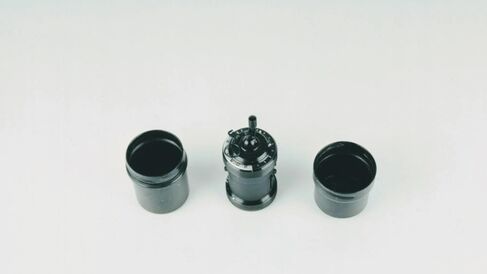Pocket Calculating Devices

In the early twentieth century, mechanical calculators became common devices used in commerce and industry. But they remained large and costly machines, difficult to transport and unsuitable for domestic use. The next step for the design of calculators was miniaturisation, achieved through precision engineering and creative recycling of older ideas. With this reduction in size came a wealth of new designs aimed at broader markets.
Dr. Auzoux founded a factory in the 1820s to produce his papier-mâché models. Here the models were sculpted, painted and varnished, often using internal metal structures to support them.
This small-scale model of the human body was produced in 1848. The Auzoux company produced models of the complete human body in a variety of sizes, including a life-sized version.
19th-century audiences were familiar with most of the animals that Dr. Auzoux modelled out of papier-mâché. This May beetle (Melolontha vulgaris) was a widespread agricultural pest, eating crops such as potatoes and corn.
Slide rules with style
Otis King's Pocket Calculator is a cylindrical slide rule that was sold by Carbic Ltd. in London from the 1920s (Image 1, right).
This 'model K' device was intended to assist businessmen with multiplication and division. it's style and simplicity helping to make it a popular device.
Other models of the Otis King Pocket Calculator were designed to perform specific tasks.
The 'model E' would have been a help to shopkeepers, as its scale converted between money (in units of pounds, shillings and pence) and weight (in units of ounces and pounds).
By writing the scales on a cylinder, all models of Otis King were small enough to carry in a pocket or purse.
Similar principles were applied to this pocket watch slide rule (Image 1, left), made by French instrument maker Henri Chatelain in the late 19th century.
The two sides have different scales of logarithms, sines, squares, and cubes. Both the steel pointers and faces could be wound like a clock to achieve the desired alignment. Watches were among the most valuable items one could own in the 19th century, and this model appealed to luxury while being extremely useful and compact.
'Not a toy'?
Some of the earliest and most popular 'adding machines' had only a few moving parts, and were operated by using a pencil or stylus to slide along rows of numbers. American inventor George Fowler created one such device in 1863. Fowler's Adding Machine cost $5 when it was launched, which made it a non-trivial investment.
These stylus devices were cheap to manufacture and became quite popular in the 20th century. Companies such as Wolverine and, later, Hasbro made toys that were based on the same idea, essentially the same in operation but with fewer 'places', prompting at least one company to retaliate and market their device as "practical - not a toy."
Stylus adding machines like the Addiator, made in Berlin from the 1920s, and the Chadwick Magic Brain, made in Japan in the 1950s (Image 2), had a bar that would clear the previous results. Addiator models varied, sometimes having different 'screens' for addition and subtraction, along with currency conversion columns, while the Magic Brain was praised for its simplicity. Even into the 1970s these devices were marketed as a cheaper alternative to electronic calculators that 'performed' the same four functions, though multiplication and division required some thinking.
The remarkable Curta
Whilst most of these early 'pocket calculators' involved a few simple sliding parts, the next major advance was miniaturisation of the more complex mechanical calculators.
Curt Herzstark was an Austrian detained by the Nazis in the Buchenwald concentration camp during World War II. He had been preoccupied with the design of a better calculator for years, having decided to prioritise the user interface: he wanted a device that could be held in one hand and quickly manipulated by the other without a bulky keyboard.
Herzstark revived Leibniz's invention of the single rotating stepped drum, filing his first patent in 1938, and he continued to work on the details of his design whilst imprisoned. His captors encouraged him to work on the device, with the aim of presenting it to Hitler to earn personal glory.
After American troops liberated Buchenwald in 1945, Hertzstark finalised his design and moved to Liechtenstein to manufacture the device, called the Curta calculator (above). The country had little infrastructure to support its manufacture, but the Prince, Franz Joseph II, was so taken with the device that it became the impetus for starting a crown-supported company, Contina.
Because of its complexity - it was composed of over 600 parts - only around 150,000 were ever made. They were widely regarded as the very best portable calculators money could buy until the 1970s, when they were superseded by pocket electronic calculators. One example in the Whipple's collection, a Type I model, was owned by the Cambridge geologist Brian Harland (1917-2003) and used by him during his field trips to the island of Svalbard, Norway.
Curtas are now considered a collector's item, and various websites and groups are devoted to documenting and discussing existing calculators.
Read more: the rise of pocket electronic calculators
Mikey McGovern
Mikey McGovern, 'Pocket calculating devices', Explore Whipple Collections, Whipple Museum of the History of Science, University of Cambridge.
